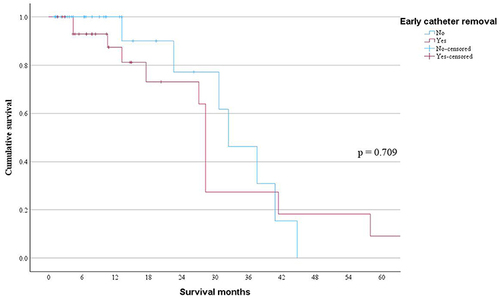Figures & data
Table 1 Cohort and Matched Cohort Demographic Characteristics
Table 2 Adjusted Cox Proportional Hazard Analysis for Unplanned Early Catheter Removal
Figure 2 Kaplan-Meier catheter survival analysis. The median catheter survival for the early group was 65 days (95% CI 50.02–79.99) compared to 156 days (95% CI 42.92–269.09) for the non-early group, p = 0.021.

Figure 3 Effect of thrombocytopenia on catheter survival by Kaplan-Meier survival analysis. The median catheter survival for patients with thrombocytopenia was 61 days (95% CI 28.58–93.42) compared to 150 days (95% CI 9.81–290.19) for patients without thrombocytopenia, p= 0.015.



